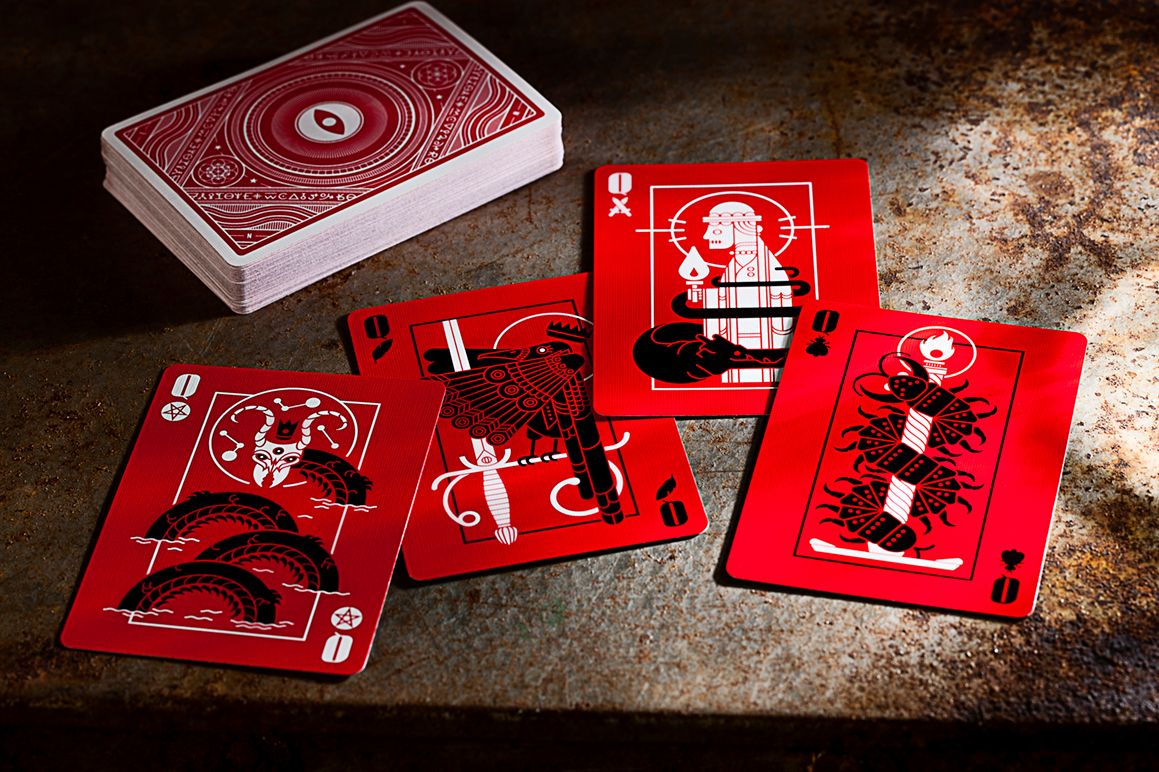The world of playing cards has evolved far beyond the traditional deck used for games like poker, solitaire, and bridge. In recent years, a surge of interest has emerged in themed and artistically elaborate decks, many of which draw inspiration from a variety of cultural, spiritual, and esoteric traditions. One such captivating creation is the Goetia Playing Cards, which bring together the mysterious realm of the occult with the practical utility of playing cards.
Goetia, a term that refers to a particular form of ceremonial magic, is deeply embedded in the rich tradition of Western occultism. The Goetia Playing Cards are inspired by the Ars Goetia, one of the most famous parts of the Lesser Key of Solomon, an ancient grimoire that details the 72 demons believed to be summoned and controlled by magicians. These decks combine occult symbolism, detailed artwork, and rich historical lore, making them appealing not only to card collectors but also to those with an interest in mysticism, the occult, and the arcane.
This article explores the origin, design, and cultural significance of Goetia Playing Cards, providing a deep dive into their mysterious allure.
What is Goetia?
Goetia refers to a practice within the Occult tradition that involves the summoning and control of spirits, particularly demons, for various purposes. The most widely known source on Goetia comes from the Ars Goetia, the first section of the Lesser Key of Solomon (also known as the Clavicula Salomonis Regis). This 17th-century grimoire lists 72 demons, each with its own unique powers, symbols, and instructions for invocation. These demons were traditionally said to be summoned by magicians to gain knowledge, power, or to fulfill specific tasks.
The demons of Goetia are often depicted with intricate symbolism, hierarchies, and detailed descriptions that reflect their personalities, powers, and methods of invocation. Over the years, the Goetia tradition has been a subject of fascination for many occult practitioners, artists, and writers, with numerous interpretations, adaptations, and artistic representations inspired by the demons of the Ars Goetia.
Goetia Playing Cards: An Artistic Expression of the Occult
Goetia Playing Cards combine two seemingly unrelated elements: the structure of traditional playing cards and the mysticism of the Goetia. These decks are typically designed with intricate artwork that blends occult symbolism, tarot-like imagery, and themes drawn directly from the 72 demons listed in the Ars Goetia.
The design of the Goetia Playing Cards varies from deck to deck, but common themes include:
- Demonology: The demons described in the Ars Goetia are often the central theme of Goetia Playing Cards. Each demon is represented by detailed illustrations that incorporate their respective symbols and characteristics. The cards themselves may feature depictions of demons in various artistic styles, ranging from classical, medieval, and gothic to modern interpretations.
- Occult Symbols: In addition to demon illustrations, the cards feature a wide array of esoteric symbols, sigils, and magical diagrams. These may include pentagrams, planetary symbols, and other mystical representations that connect the cards to traditional occult practices.
- Intricate Artwork: The artwork on Goetia Playing Cards is usually highly detailed, with rich, dark colors and ornate designs. The intention is not only to create a visually striking deck but to imbue the cards with the essence of the occult. Many Goetia decks are collectors’ items due to the level of artistry and the cultural significance behind them.
- Tarot-Like Structure: While they are still playing cards, some Goetia decks incorporate tarot card structures, with major arcana-like cards that represent specific demons or themes. This allows the deck to be used for both gaming purposes and spiritual or divinatory practices, adding layers of mysticism and meaning.
The Allure of Goetia Playing Cards: Collectors and Spiritual Seekers
Goetia Playing Cards attract a wide variety of enthusiasts, from card collectors to occult practitioners. Their appeal lies not only in their unique design and the rich history of the Goetia tradition but also in their multi-faceted uses.
1. For Card Collectors:
Playing card collectors appreciate Goetia decks for their distinctive artwork and the rarity of certain editions. Each deck is often produced in limited quantities, making them highly sought after. The combination of tarot-like structure, symbolism, and the mysterious allure of the demons adds value and intrigue for collectors. Many Goetia Playing Cards feature premium materials, such as embossed or foiled finishes, providing an additional layer of craftsmanship to the design.
For those interested in building a collection of esoteric or occult-themed items, Goetia Playing Cards serve as both an artistic expression and a unique artifact. Collectors often see these decks as pieces of occult history, combining the worlds of mysticism and fine art.
2. For Occultists and Practitioners of Magic:
For those who practice or study the occult, Goetia Playing Cards offer a tangible connection to the spiritual realm. They can be used in various ways, from personal divination to ritual magic. Much like tarot cards or other divinatory tools, Goetia Playing Cards can be shuffled and drawn for guidance, insight, and spiritual reflection.
Some practitioners may use the deck to connect with the demons described in the Ars Goetia, invoking them through the card’s symbolism, sigils, and accompanying instructions. The cards can act as a focal point for meditation, ritual, or summoning, allowing users to engage with the powerful entities of the Goetia in a more personal and symbolic manner.
3. For Game Enthusiasts:
Although Goetia Playing Cards are steeped in mysticism, they also function as regular playing cards. These decks can be used for any card game, providing a unique and thematic twist to traditional games. Gamers who enjoy blending the world of fantasy, mythology, and card-playing will find these decks to be an interesting addition to their collection.
The Significance of Goetia Playing Cards
The cultural significance of Goetia Playing Cards is tied closely to the resurgence of interest in occult practices and symbolism in modern society. Many people today are seeking alternative forms of spiritual exploration, and the Goetia tradition, with its deep history and mysterious associations, offers a compelling route for both artistic and esoteric exploration.
By incorporating demons, sigils, and arcane imagery into an everyday object like playing cards, the Goetia deck brings the mystical into the mundane, inviting individuals to ponder deeper questions about the nature of power, control, and the supernatural. For many, the Goetia Playing Cards serve as a gateway to a world of esoteric knowledge, personal transformation, and magical practices.
Conclusion
Goetia Playing Cards offer a fascinating blend of art, history, and mysticism. By drawing inspiration from the Ars Goetia and the occult practices of demonology, these decks provide a unique and visually stunning way to engage with the arcane. Whether used for gaming, divination, or as a collectible artifact, Goetia Playing Cards serve as a reminder of the deep, symbolic world that lies just beneath the surface of everyday life.




